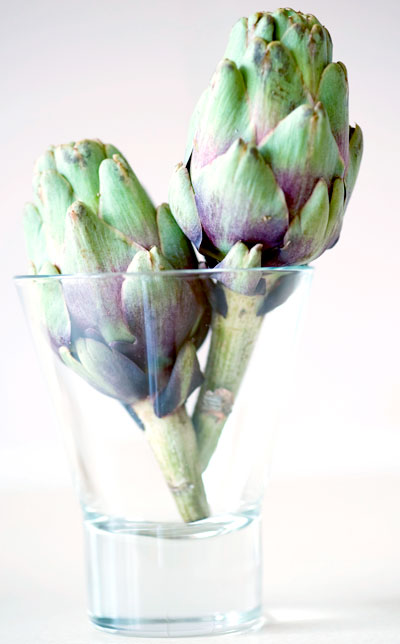Artichokes may stand in the shadows of the more exotic superfoods like the acai berry.
Technically the bud of a flowering plant, and not a vegetable, the artichoke packs quite a punch. Scientific studies over the past three decades show just how powerful the active ingredients in artichokes are in helping stabilize blood sugar, clean the liver, and scrub arteries of bad cholesterol. A fatty liver is a common health challenge that can present in a variety of symptoms.
This beauty may look daunting but is delicious when correctly prepared. And it offers a superb boost for those looking to detox their liver and to shed some excess fat.
Artichoke is the Sugar Cop
Artichokes are rich in inulin. Inulin is a blood sugar regulator and has virtually no calories.
Simply put, lower blood sugar means your body doesn’t need to convert as much excess sugar into stored fat in your body.
And the yo-yoing of sugar levels is tough and unhealthy for the body systems.
Adding artichokes to their diet is beneficial for diabetics.
Artichoke for Cholesterol
Cynarin in artichokes supports the liver in being more efficient at processing and eliminating unhealthy fat.
In various studies done in Europe over the past 30 years and cited by the World Health Organization, cynarin has been found to significantly reduce the levels of bad cholesterol in the blood.
note: According to Complementary and Alternative Health by Dr Steve Bratman, people with gallstones or gallbladder troubles should avoid artichoke leaf which was once used in traditional European medicine. The leaf may increase gallbladder contractions. Anyone with allergies to artichokes of course also have to be careful and this includes related plants such as arnica, from the Asteraceae family.
Cooking Artichokes

Artichokes are a flower. The thick green “armour” we are familiar with are the outer petals. The edible ones are the inner layer of pale yellow petals. Peel back these petals, you get the choke. Scoop out the choke and voila, the delicious heart and stem.
Choose heavier globes to get a meatier heart. Pick ones with petals that are closed. The petals on older artichokes are more opened up.
We can prepare the whole artichoke, especially easy with the smaller baby artichokes, and just the hearts.
Rinse the artichokes to remove any dirt from the petals. Remove about 1/2 inch from the stem and about 1/4 inch from the top. Use scissors to trim off the top of the leaves.
Steaming a whole artichoke takes about half an hour. You can also roast, grill or bake it. Cut the artichoke in half and scoop out the choke, which is too fibrous to eat in the full size artichokes. Try seasoning with lemon, butter, sea salt, and any spices you love.
WHO’s studies on Medicinal Plants
The Encyclopedia of Healing Foods

